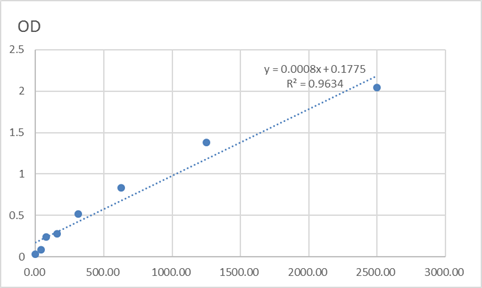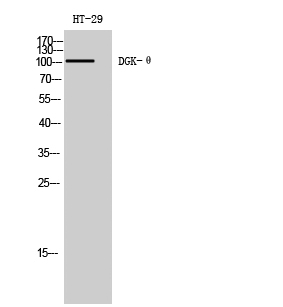Total DGK-θ Cell-Based Colorimetric ELISA Kit
- Catalog No.:KA3639C
- Applications:ELISA
- Reactivity:Human
- Gene Name:
- DGKQ
- Human Gene Id:
- 1609
- Human Swiss Prot No:
- P52824
- Mouse Swiss Prot No:
- Q6P5E8
- Storage Stability:
- 2-8°C/6 months
- Other Name:
- Diacylglycerol kinase theta (DAG kinase theta) (EC 2.7.1.107) (Diglyceride kinase theta) (DGK-theta)
- Detection Method:
- Colorimetric
- Background:
- catalytic activity:ATP + 1,2-diacylglycerol = ADP + 1,2-diacyl-sn-glycerol 3-phosphate.,similarity:Belongs to the eukaryotic diacylglycerol kinase family.,similarity:Contains 1 DAGKc domain.,similarity:Contains 1 Ras-associating domain.,similarity:Contains 3 phorbol-ester/DAG-type zinc fingers.,
- Function:
- regulation of transcription, DNA-dependent, regulation of transcription from RNA polymerase II promoter, cell surface receptor linked signal transduction, G-protein coupled receptor protein signaling pathway, activation of protein kinase C activity by G-protein coupled receptor protein signaling pathway, intracellular signaling cascade, protein kinase cascade, response to organic substance, regulation of specific transcription from RNA polymerase II promoter,regulation of phosphate metabolic process, activation of protein kinase activity, regulation of gene-specific transcription, response to ATP, positive regulation of kinase activity, regulation of transcription from RNA polymerase II promoter by nuclear hormone receptor, regulation of phosphorylation, positive regulation of catalytic activity,regulation of kinase activity, positive regulation of molecular function, regulation of trans
- Subcellular Location:
- Cytoplasm . Cytoplasm, cytosol . Cell membrane . Cell junction, synapse . Cytoplasm, cytoskeleton . Nucleus . Nucleus speckle . Nucleus matrix . Translocates to the plasma membrane in response to steroid hormone receptor stimulation (PubMed:15632189). Translocation to the plasma membrane is dependent on G-protein coupled receptor stimulation and subsequent activation of PRKCE and probably PRKCH (PubMed:15632189). Translocates to the nucleus in response to thrombin stimulation (Probable). Association with the nuclear matrix is regulated by nerve growth factor (By similarity). .
- June 19-2018
- WESTERN IMMUNOBLOTTING PROTOCOL
- June 19-2018
- IMMUNOHISTOCHEMISTRY-PARAFFIN PROTOCOL
- June 19-2018
- IMMUNOFLUORESCENCE PROTOCOL
- September 08-2020
- FLOW-CYTOMEYRT-PROTOCOL
- May 20-2022
- Cell-Based ELISA│解您多样本WB检测之困扰
- July 13-2018
- CELL-BASED-ELISA-PROTOCOL-FOR-ACETYL-PROTEIN
- July 13-2018
- CELL-BASED-ELISA-PROTOCOL-FOR-PHOSPHO-PROTEIN
- July 13-2018
- Antibody-FAQs



